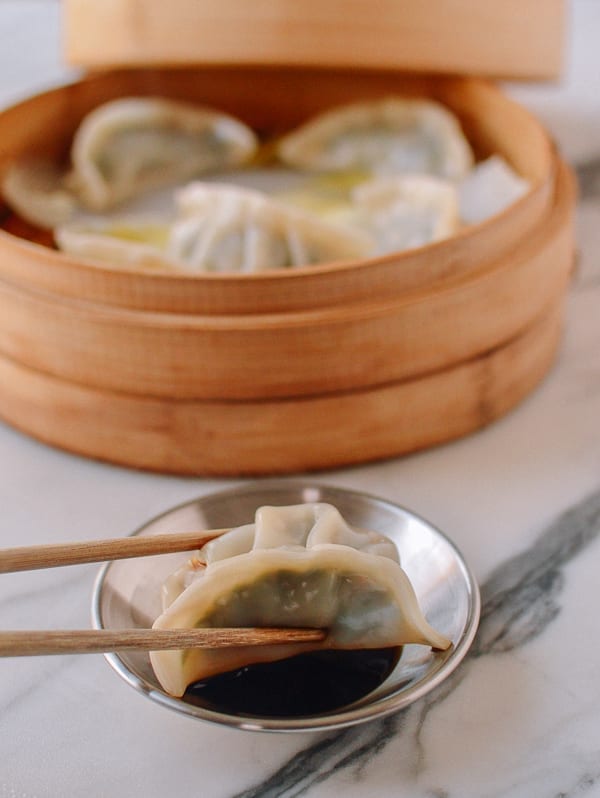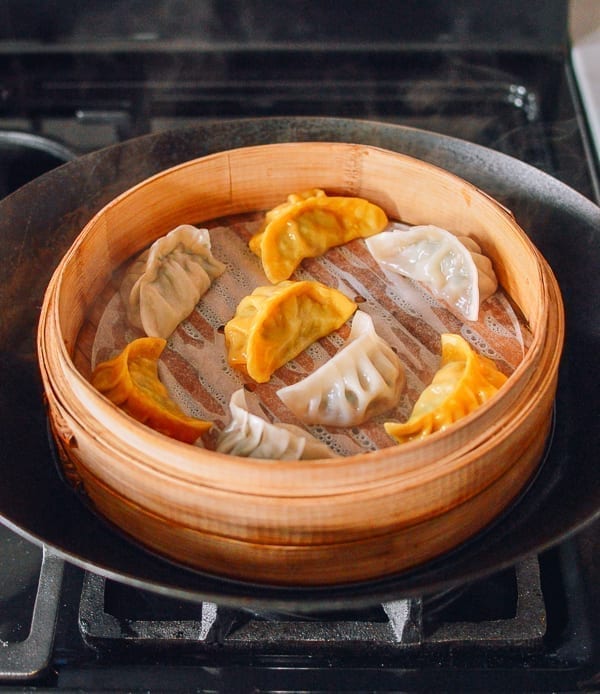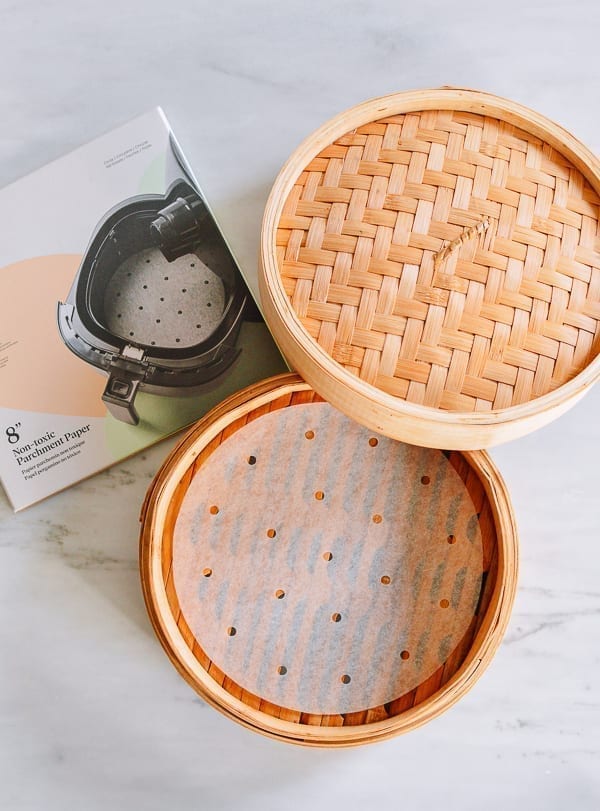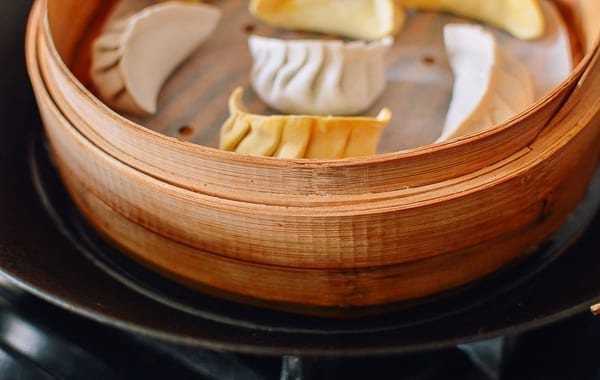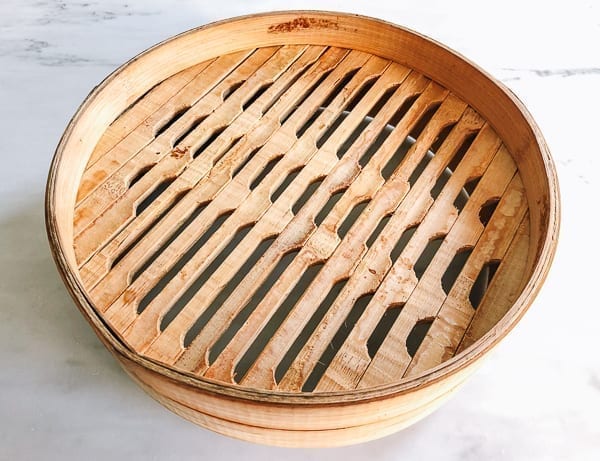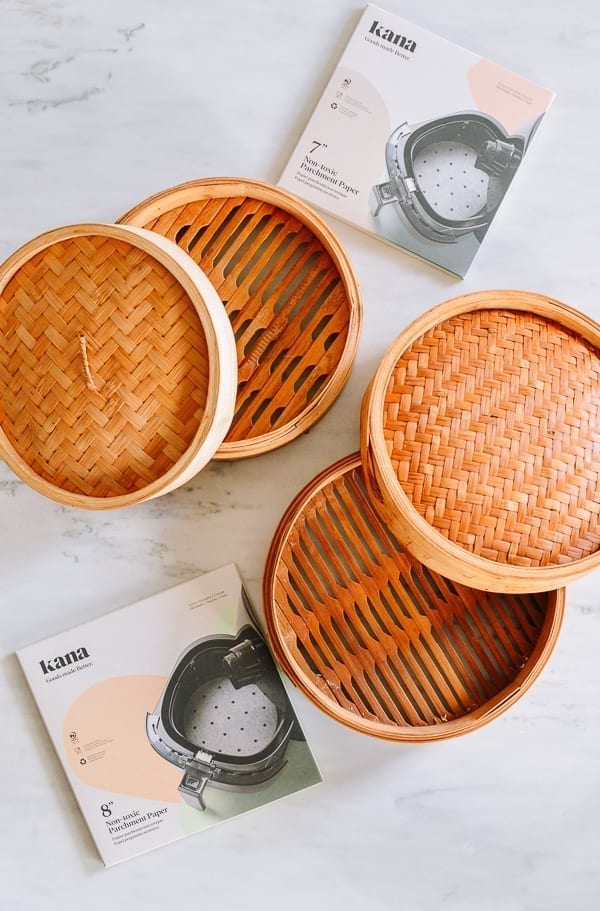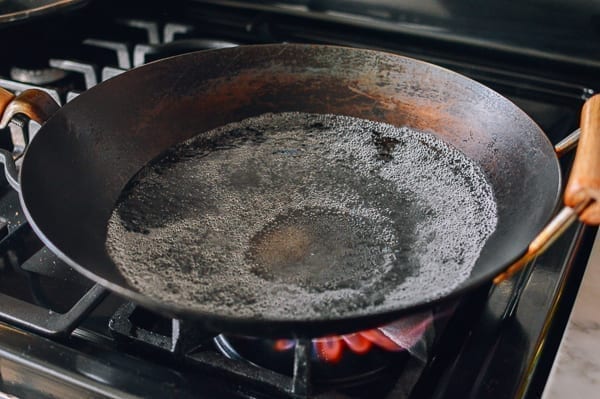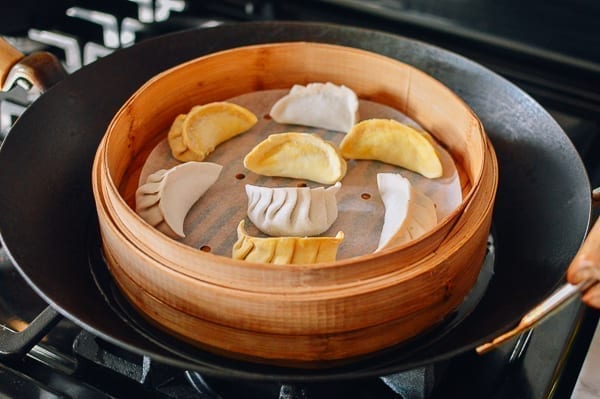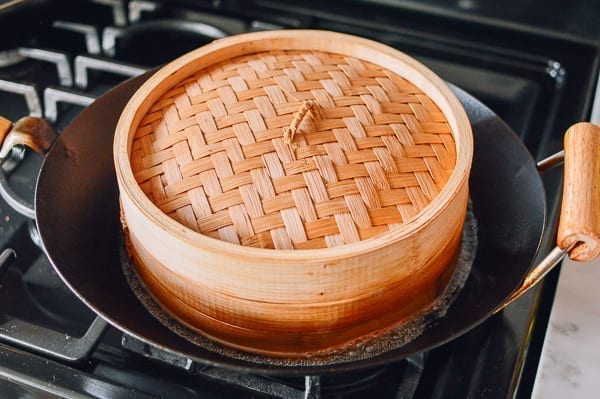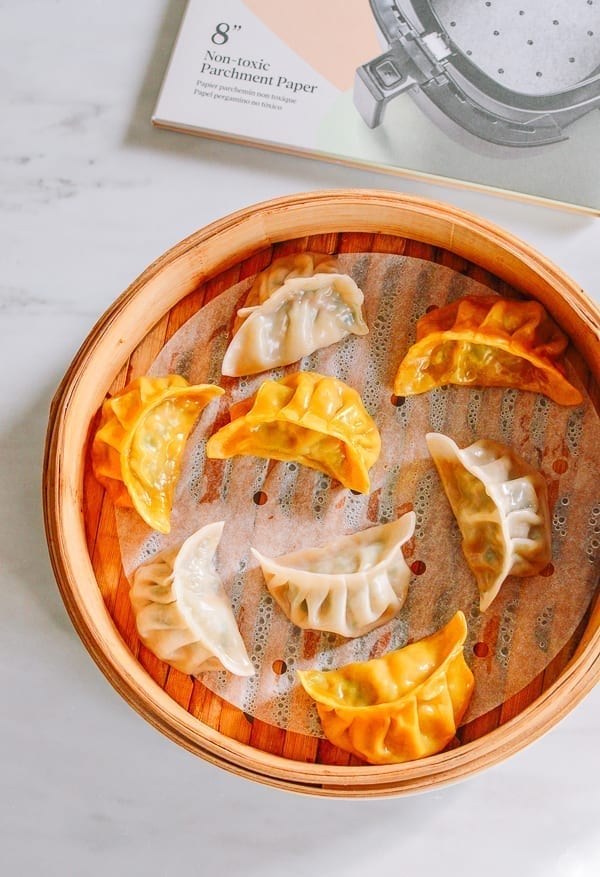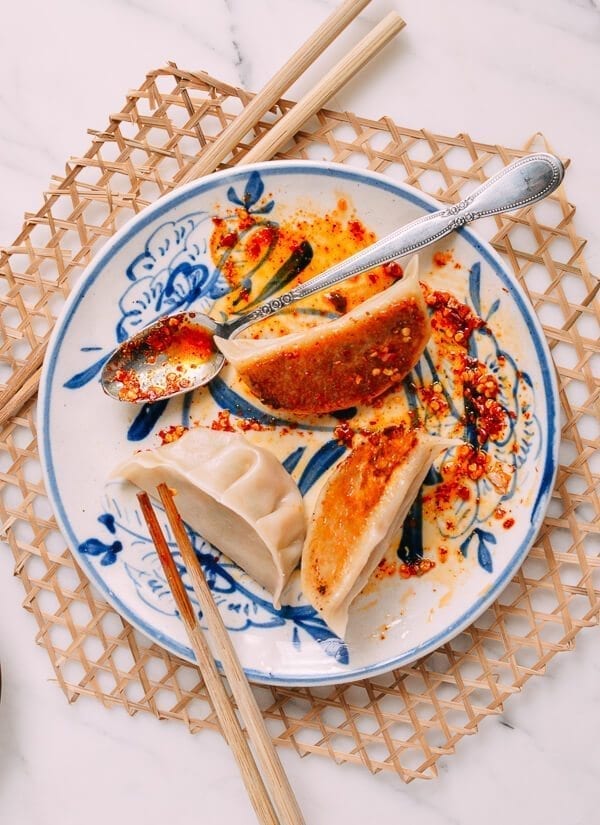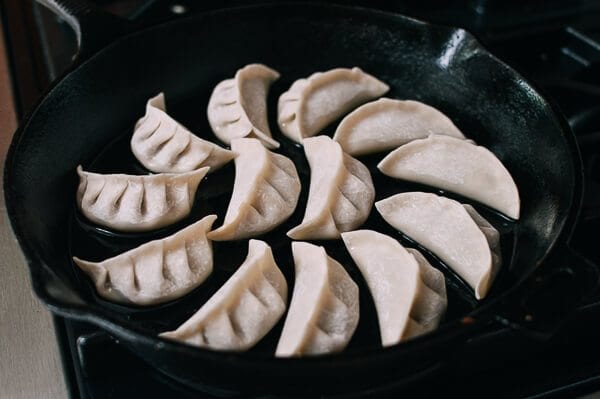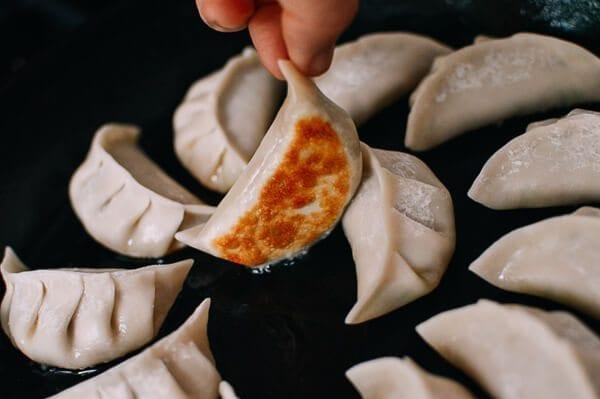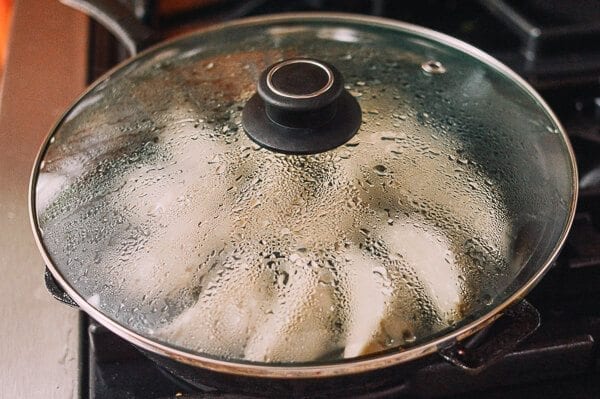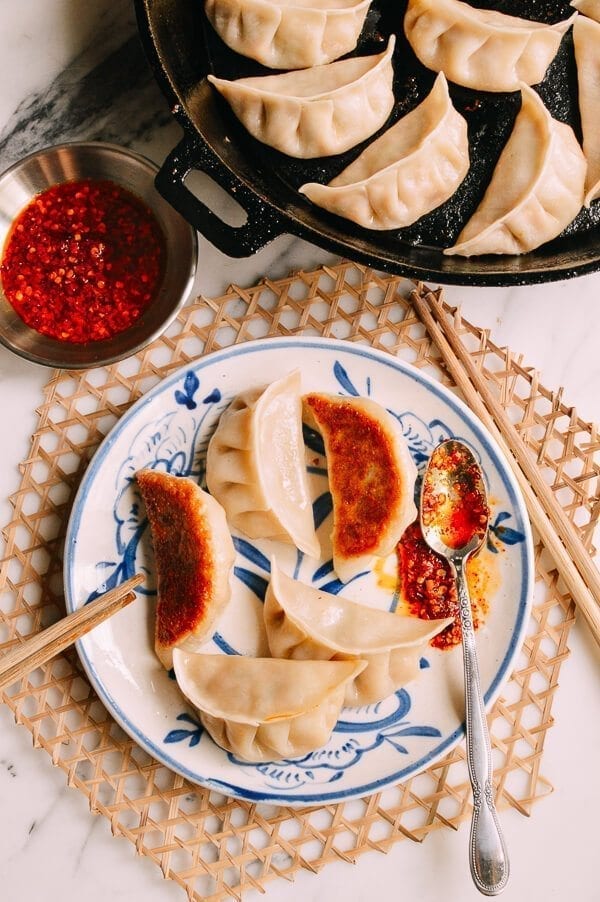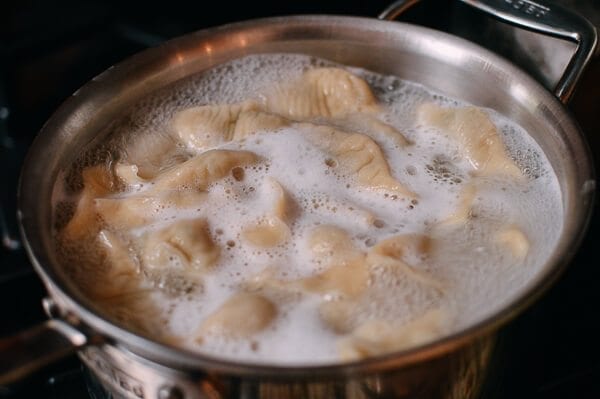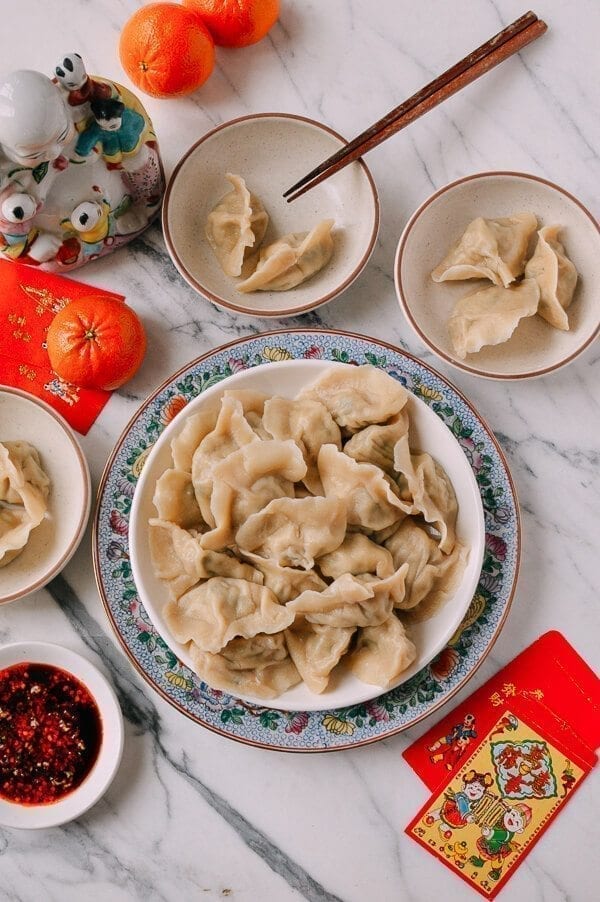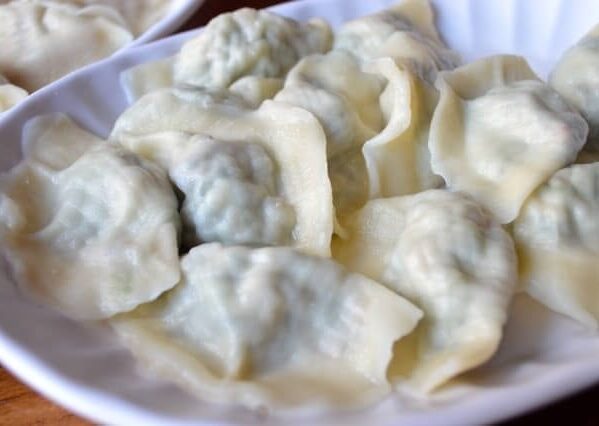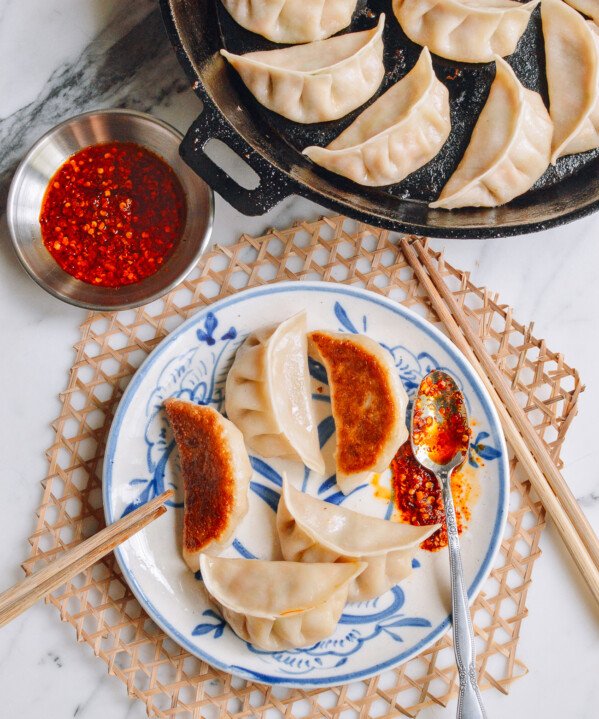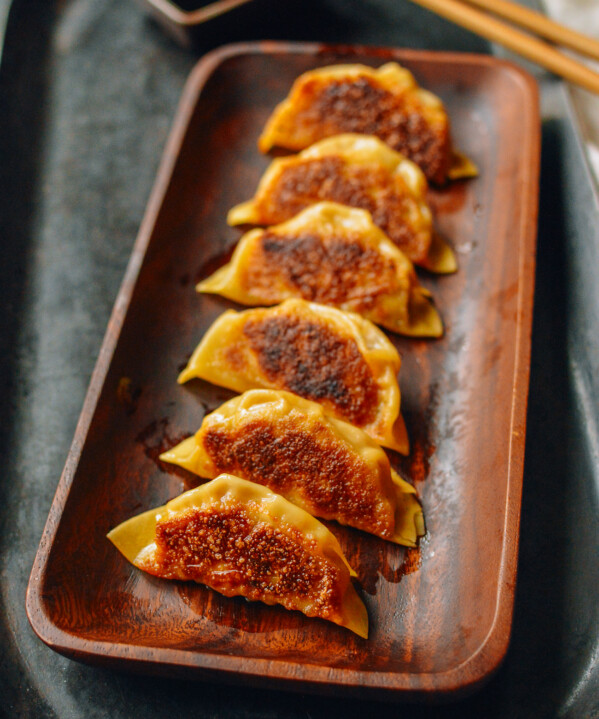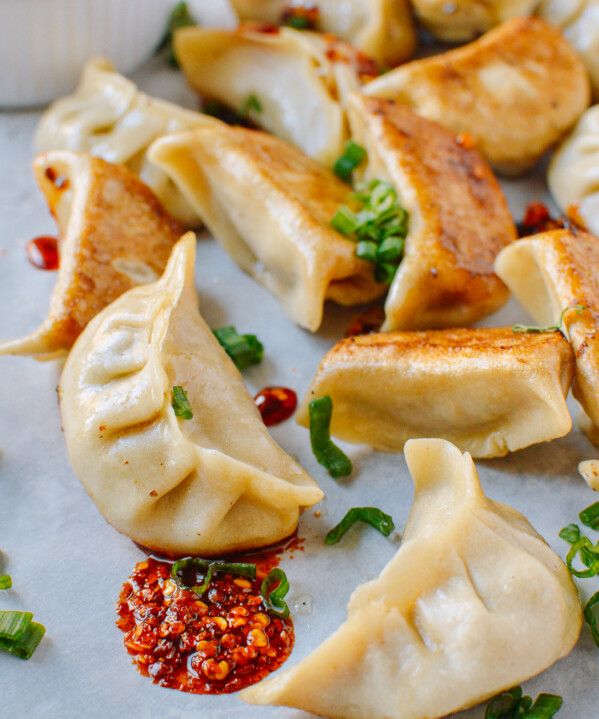Growing up, dumplings (jiǎozi, 餃子) were practically their own food group in our family. A bag of dumplings was always in the freezer, ready to become an after school snack, quick breakfast, party appetizer, or lazy weeknight dinner. In this post, we’ll talk about how to cook dumplings properly, with three methods: steaming, pan-frying, and boiling.
NOTE: We worked with Kana (maker of sustainable parchment paper products) to bring you this post. All thoughts and opinions are our own.
How to Eat Chinese Dumplings
Jiaozi can be eaten any time of day, any time of year, as an appetizer, side dish, or main dish. They are the ultimate versatile food item.
They’re also a must-have on the table during Chinese New Year (particularly New Year’s Eve), since they symbolize wealth. Their shape actually resembles the gold ingots once used as currency in ancient China.
Dumplings can be steamed (zhēngjiǎo, 蒸饺), pan-fried (jiānjiǎo, 煎饺), or boiled (shuǐjiǎo, 水饺, literal translation: water dumpling). They are then served with a dipping sauce, like Chinese black vinegar or our favorite dumpling sauce recipe. They can also be eaten with hot pot meals or served in soup!
Making Dumplings
Before we get into how to cook dumplings, let’s quickly talk about how to make them!
You may have already tried some of the tasty dumpling recipes on our blog. We have built up quite the repertoire over the years. Here are some of our most popular:
- Our Original Dumpling Recipe (the first one we ever posted, still our go-to; can be customized to your own tastes!)
- Pork & Chive Dumplings (simple & classic)
- Vegetable Dumplings (the best vegan/vegetarian dumpling you’ll ever taste)
- Chicken Mushroom Dumplings (FULL of umami)
- Chicken Zucchini Dumplings (perfect for those without access to a Chinese supermarket)
- Whole Wheat Dumpling Wrappers (can be used with any of the above recipes for a healthier option)
Once you have your recipe picked out, see our full tutorial on how to fold dumplings (4 methods, from beginner to advanced).
How to Cook Chinese Dumplings
Ok, let’s get into the details on how to cook dumplings once you’ve put them all together! I’ll provide step-by-step instructions and tips for three different methods: steaming, pan-frying, and boiling.
Method 1: Steam
Steamed dumplings are not only one of the healthier ways to go, they’re delicious! The outer wrapper stays firm and a little chewy. This is also one of the better ways to cook dumplings if you really want the flavor of the filling to shine through.
Equipment Needed:
- Steaming set-up, such as a bamboo steamer & wok, metal steamer, or pan with cover/steam rack (see our post on How to Set Up a Steamer with/without special equipment)
- Non-stick steamer liners (such as these easy-to-use, sustainable parchment paper liners from Kana)
Instructions:
Fill a wok (with lid) or metal steamer with water. If using a wok with a bamboo steamer, make sure there’s enough water in the wok to come up the sides of the steamer about 1 cm, to prevent scorching.
If using a metal steamer or pan/steam rack set-up, just make sure there’s enough water to simmer for 10 minutes without drying out. Make sure the water isn’t high enough to touch the dumplings during steaming.
Take a look at the photo of the bottom of the bamboo steamer, below. The platform on which the dumplings will sit is raised about 2 cm. You want to make sure the steamer is sitting in enough water such that it doesn’t get scorched or burned, but not so much water that the boiling liquid touches the steaming platform.
You may end up having to add a little boiling water as the dumplings steam.
Line your steamer with a non-stick liner. You can use large, flat leaves of cabbage or lettuce for this, but we’re loving Kana parchment paper liners.
They’re sustainably sourced, biodegradable, and easy to use. They come in different sizes and shapes, and can be used in bamboo steamers, metal steamers, steamer baskets, and air fryers.
Bring the water in your steamer/wok to a boil.
Place the dumplings about 1-inch apart, giving them some room to expand. Once boiling, place the dumplings in, cover, and steam on medium to medium high heat for 8-10 minutes.
The water should be simmering enough to generate steam. It should not be at a rigorous boil that bubbles up and touches the dumplings or evaporates the water too fast.
That’s it!
Method 2: Pan-fry
Everyone loves the crispy bottoms on a batch of pan-fried dumplings (or “potstickers”). You really can’t go wrong with this cooking method!
Equipment needed:
- Cast iron skillet or nonstick pan with lid
- Vegetable oil
Instructions:
Heat cast iron pan over medium high heat until smoking. If using a non-stick pan, heat over medium heat until hot.
Add a couple tablespoons vegetable oil, and then add the dumplings.
Fry until the bottoms of the dumplings are lightly golden brown.
Get a tight fitting lid for your pan and hold it out in front of you as a kind of shield between you and the pan (you’re about to add the water to steam the dumplings, which will cause some oil splatter).
Add about ½ cup water to the pan and immediately cover. Allow to steam in the pan until all the water has cooked off, about 7 minutes.
Uncover and continue cooking until the pan is completely dry and the bottoms of the dumplings are crispy.
Method 3: Boil
Boiling dumplings is a great way to cook a big batch in very little time. Cooking them just right ensures that the wrappers are still al dente. Like steaming, boiling allows you to really taste the flavor of the juicy filling inside the dumplings.
Equipment needed:
- Medium to large deep pot
Instructions:
Depending on the number of dumplings cooking, bring a medium to large pot of water to a boil.
Drop in the dumplings, and stir immediately so they don’t stick to the bottom of the pot.
Bring back to a boil, and boil for 6-8 minutes, depending on their size.
Ideally, anytime the water comes up to a vigorous boil, add 1/4 cup of cold water. This cools the water down and prevents the dumpling wrappers from overcooking and becoming starchy.
A Note On Cooking Frozen Dumplings
If cooking frozen dumplings, there is no need to thaw them first. The instructions above are still accurate, you just may want to cook them on the longer side of the range (8 minutes for boiling, 10 minutes for steaming).
How to Cook Dumplings (3 Ways)
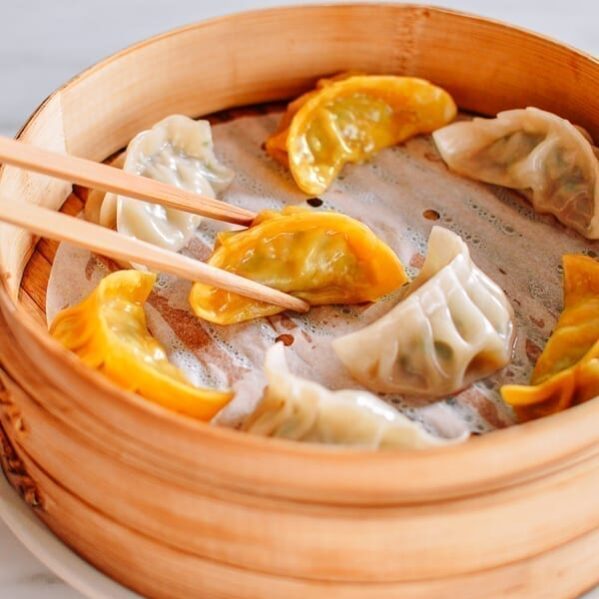
Ingredients
- fresh or frozen dumplings
Instructions
To Steam Dumplings:
- Fill a wok (with lid) or metal steamer with water. If using a wok with a bamboo steamer, make sure there’s enough water in the wok to come up the sides of the steamer about 1 cm, to prevent scorching. If using a metal steamer or pan/steam rack set-up, just make sure there’s enough water to simmer for 10 minutes without drying out. Make sure the water isn’t high enough to touch the dumplings during steaming.
- Line your steamer with a non-stick liner. You can use large, flat leaves of cabbage or lettuce for this, but we’re loving Kana parchment paper liners.
- Place the dumplings about 1-inch apart, giving them some room to expand.
- Place the dumplings about 1-inch apart, giving them some room to expand. Once boiling, place the dumplings in, cover, and steam on medium to medium high heat for 8-10 minutes.
To Pan-fry Dumplings:
- Heat cast iron pan over medium high heat until smoking. If using a non-stick pan, heat over medium heat until hot.
- Add a couple tablespoons vegetable oil, and then add the dumplings. Fry until the bottoms of the dumplings are lightly golden brown.
- Get a tight fitting lid for your pan and hold it out in front of you as a kind of shield between you and the pan (you're about to add the water to steam the dumplings, which will cause some oil splatter). Add about ½ cup water to the pan and immediately cover. Allow to steam in the pan until all the water has cooked off, about 7 minutes.
- Uncover and continue cooking until the pan is completely dry and the bottoms of the dumplings are crispy.
To Boil Dumplings:
- Depending on the number of dumplings you’re cooking, bring a medium to large pot of water to a boil.
- Drop in the dumplings, and stir immediately so they don’t stick to the bottom of the pot.
- Bring back to a boil, and boil for 6-8 minutes, depending on their size, until cooked through. Ideally, anytime the water comes up to a vigorous boil, add 1/4 cup of cold water. This cools the water down and prevents the dumpling wrappers from overcooking and becoming starchy.

